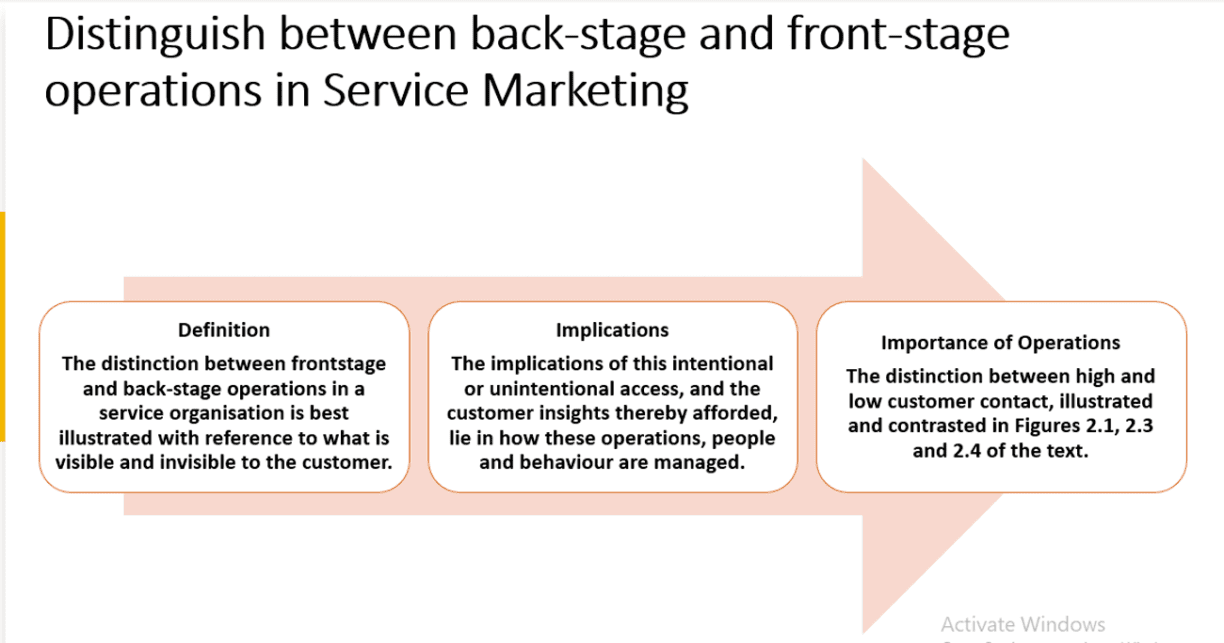Types of Service operations
- The distinction between frontstage and back-stage service operations in a service organization is best illustrated with reference to what is visible and invisible to the customer.
- This distinction may or may not be clear-cut. For instance, a restaurant may be designed in such a way that the kitchen and its operations are intended to be out of view of the customer.
- To access the toilets, however, a customer may need to pass by the kitchen and, consequently, can now get a glimpse of what was originally intended to be not on show.
- Similarly, customers are often inadvertently given an insight into back-stage operations because of open floor planning, doors left open or ajar, or backroom staff mingling and communicating with front-of-house staff.
- And of course, there are also cases where what may be back-stage in one service organisation is opened to public scrutiny in another.
- Some restaurant kitchens, bakeries, repair services, and banking operations provide examples of this; where the ‘engine room’, so to speak, is purposefully put on display.
- The implications of this intentional or unintentional access, and the customer insights thereby afforded, lie in how these operations, people and behaviour are managed.
- In both front-stage and back-stage operations management must be concerned with how to organise staff, facilities and activities so that what needs to be done can be undertaken efficiently and most productively, and so that interpersonal relations between employees, as well as between employees and customers, are harmonious.
- It must also be recognised, however, that whatever a customer observes, frontstage and back-stage, serves to shape their perception of quality and (dis)satisfaction.
- Therefore back-stage as well as front-stage resources, personnel and behaviour need to be managed in a way mindful of this, yet at the same time with due regard for internal logistic considerations
- The distinction between high and low customer contact, illustrated and contrasted in Figures 2.1, 2.3 and 2.4 of the text, is made with reference to the extent to which a service employee must interact with a customer.
- A corollary is that the higher the amount of customer contact, the more developed must be the employee’s interpersonal and communication skills, and their professional ability to satisfy a customer’s particular requirements, needs and demands.
- This expertise is developed through training and with experience and maturity but is something that may also be related to innate aptitude.
- Then raises recruitment and selection implications as well as training and development considerations.

